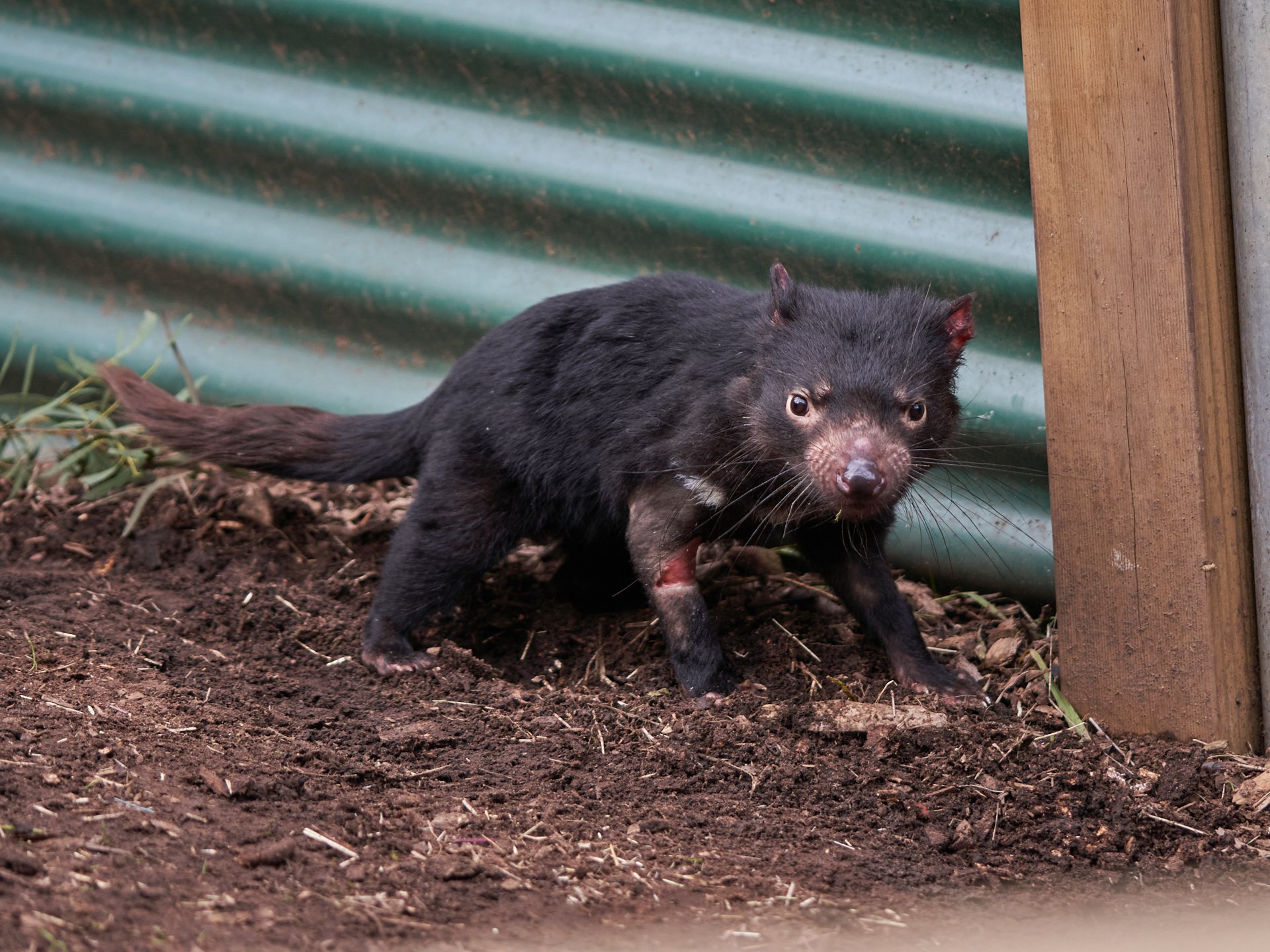On the 25th of June our Wildlife Rescue Service received a call from the Save the Tasmanian Devil Program regarding a juvenile devil with a large injury to her front right leg. “Clownfish”, as she had affectionately become known as, was found while doing routine trapping on Maria Island, which is done to monitor the health of the wild devil population.
The Save the Tasmanian Devil Program (STDP) is the official government response to battle the threat of extinction that our endangered Tasmanian devils face in the plight of Devil Facial Tumour Disease (DFTD). Established in 2003, the program saw the collaboration of experts from all over Australia and is now a state-wide team made up of dedicated staff and volunteers who work tirelessly to secure the population of devils for many generations to come.
Bonorong’s Wildlife Rescue Team arranged transport to get Clownfish down to the Sanctuary for treatment and she was transferred to Bonorong’s Wildlife Hospital to be assessed and treated by our IFAW-funded wildlife vets. It was still unclear at this stage how the injury happened or what the cause was.
Our experienced vet team got to work as soon as Clownfish arrived at the Sanctuary. Placing her under general anaesthetic, the team gave her a thorough health check and was able to take the time to closely examine her wound. It became clear the wound was already a few days old which meant a considerable amount of necrotic skin that needed to be removed. This means skin and flesh that had died which must then be removed to enable healing and prevent infection. Once the skin was removed the wound was then far too large to stitch up, and there was grave concern that Clownfish may lose her leg.
Tasmanian Devils are endangered, with only an estimated 25,000 individuals left in the wild. Bonorong’s IFAW funded vets decided to take the chance on trying to save Clownfish’s leg which meant she would have the best chance of returning to the wild and doing her part to help secure future generations!
Tasmanian devils are only found on our little island state and are the largest carnivorous marsupial in the world. There was believed to be around 140,000 devils in the wild before the Tasmanian Devil Facial Tumour Disease became prominent in the 1990’s, completely decimating the wild populations.
Clownfish’s wound required bandaging and constant monitoring to ensure it remained clean and dry. Multiple times over the course of a week, the young Tasmanian devil was brought into the Wildlife Hospital to have her bandage changed and her wound cleaned. There was a complication though as her skin became irritated, her devil’s skin not suited to the material of bandages. Removing the dressings, the vet team made the decision to treat her wound as an open wound which means with no covered dressings.
This process continued and weeks soon turned into months and something very incredible happened, Clownfish began to grow! When she first arrived at Bonorong, she was only 2kg but over her time in rehabilitation she had put on just a little over a kilo and was continuing to grow each day. An adult Tasmanian Devil can weigh up to 8kgs, so while Clownfish still had a way to go before becoming a fully-grown devil, she was well on her way.
Tasmanian Devils are a far cry from their cartoon counterparts, they’re not loud and destructive – very much the opposite! By nature, devils are shy and elusive, which made it difficult for the Bonorong team to monitor how Clownfish was using her injured leg. A night vision trail camera was placed in her enclosure to get a better idea of how she was moving with her injury and to everyone’s delight, the footage showed Clownfish walking, running, and climbing the structures in her enclosure with ease.
Each time the vet team would check up on Clownfish’s injury, her wound was measured to check the healing progress. Cell by cell, millimeter by millimeter the wound began to close over. Two months from the day Clownfish had arrived at Bonorong Wildlife Sanctuary, the wound on her front right leg was declared completely closed and she was ready to return to the wild again! The Save the Tasmania Devil Program was called to tell them the great news and for them to help arrange her release. After being safely transported to her release site the transport carrier door was opened and without hesitation, Clownfish dashed out and ran back into the bush without so much as looking back.
Good luck out there Clownfish!!
P.S. - Each year the Save the Tasmanian Devil Program chooses a theme for naming the new devils that they catch that haven’t been trapped before. This year's theme on Maria Island was “types of fish”, so that is how Clownfish got her name!





